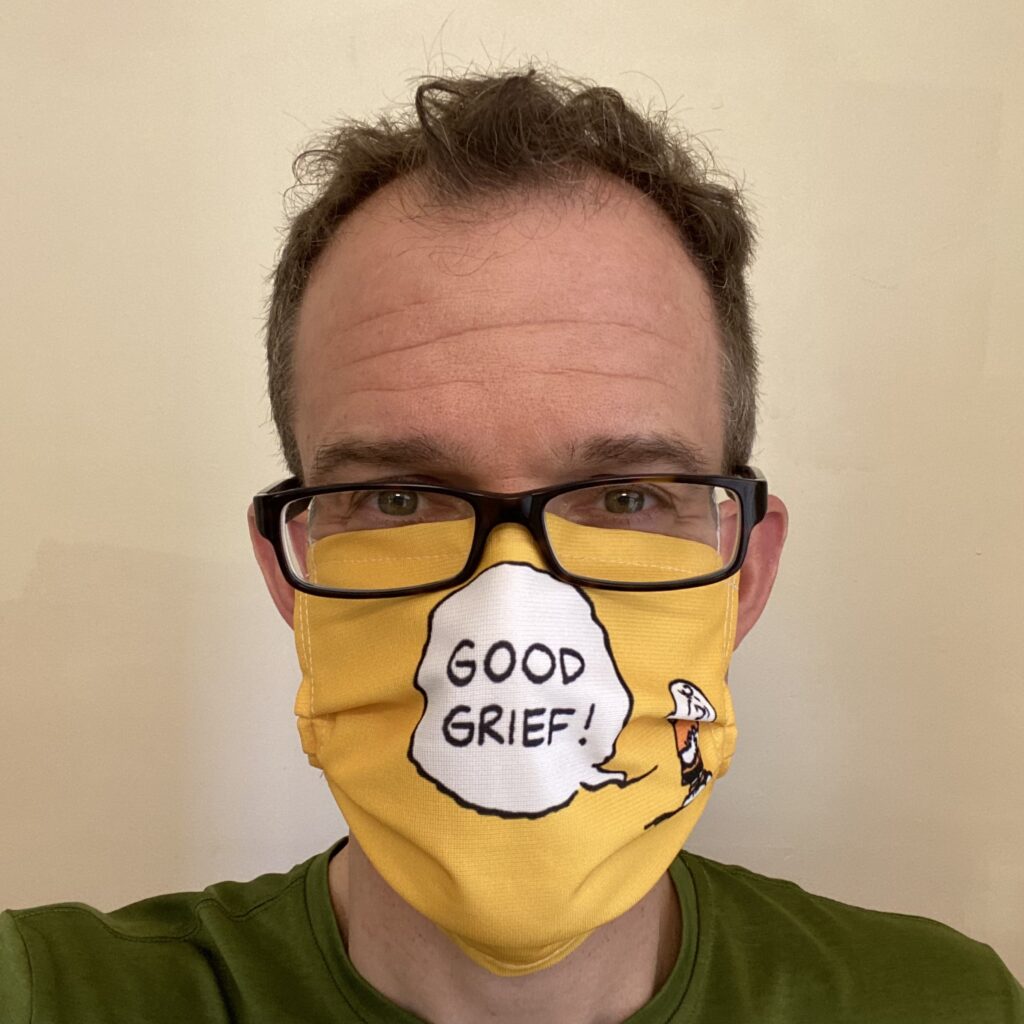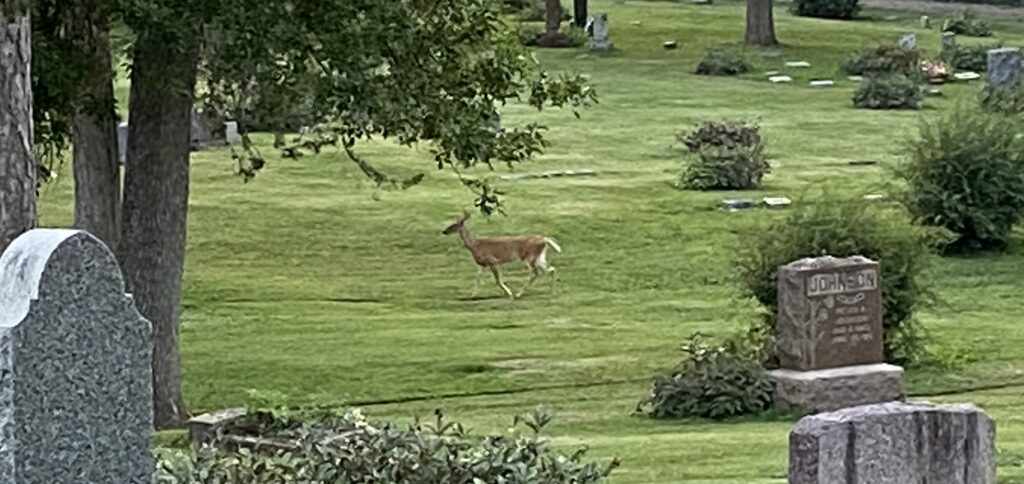
If your plague began (as mine did) on March 14 2020, then today is day 500 of our plague era. (If it didn’t, then adjust your count accordingly.) As I noted at plague day 250, very early on I decided that day 500 would be the end of the plague.
I know that the plague has not yet ended. The “500” endpoint was never intended to be accurate. It was and is simply a way of locating ourselves in plague time, of reminding us that there is a future after plague, and of granting us permission to imagine ourselves and those we love in that future. Even though we will not all reach that future, the COVID-19 crisis will eventually, gradually conclude.
Indeed, despite vaccine inequality, despite vaccine hesitancy (or outright opposition), despite the rise of the Delta variant (and any variants yet to emerge), we are moving towards an abatement of the pandemic. We’re moving too slowly, I know. Where the vaccine is available, misinformation has infected so many, creating opportunities for new variants, and leading to more covid cases and deaths. Since access to a vaccine varies widely across this planet, the U.S. should share its surplus vaccine more generously – now. Vaccine doses spoil; if Americans are choosing not to get vaccinated, then send more doses to people who want it. Also, to curb the spread and curtail mutations, everyone needs to be vaccinated as swiftly as possible.
But… despite the problems with distribution, we have a vaccine. Several vaccines. And they are getting distributed. This time last year, I could not have imagined that in July 2021 we’d already have a half-dozen or so good vaccines, and that over one billion people would be fully vaccinated. That’s a real cause for hope.
This is not to minimize the ongoing suffering, the 25% of COVID-19 survivors who have long covid, the 4 million dead (and counting) globally. As Clint Smith’s poem so eloquently notes,
When people say,
“we have made it
through worse before”
all I hear is the wind slapping against the gravestones
of those who did not make it, those who did not
survive to see the confetti fall from the sky, those who
did not live to watch the parade roll down the street.
Many more will not see the victory parade.
And yet here I am insisting on hope. Perhaps you’re thinking, “Oh, easy for you to say – you’re vaccinated.” Or perhaps you think “yeah, enjoy your naïve optimism.” There are many reasons to argue against hope.
I am not a naturally hopeful person, myself.
I have a tendency to stare into the abyss. That’s one reason I’ve always liked that line from Theodore Gottlieb (a.k.a. Brother Theodore): “I’ve gazed into the abyss and the abyss gazed into me, and neither of us liked what we saw.” I like to get a sense of just how far down the abyss goes (or, perhaps, that the abyss has no end).
Then, I look up. And I orient myself in a hopeful, productive direction. I choose hope because it allows me to act in the world. I choose hope because it is practical. I’m well aware of the depth of the abyss. (Having stared into it. Yet again.) Indeed, some days, my pessimism-optimism balance reaches 49%-51%. That’s OK. As long as I have 51% on the optimistic side, I’ve got enough hope to keep pressing on.
How to maintain that 51%? And how to sustain it as the pandemic lumbers on, US democracy continues to erode, and the planet burns?
Well, I don’t know what works for you. But, in the perhaps misplaced hope that this may help you discover what works for you, here are three things that have worked for me.
1. Write every day. Before the pandemic, I irregularly kept a journal. During the pandemic, I made journaling a regular – as in daily – activity. Writing in it helps me in three ways. First, it helps me process my experience and – in so doing – maintain some level of sanity. Second, it gives me an opportunity to be more receptive to delight – discussed more fully in this blog post on Ross Gay’s Book of Delights. Third, and as my day-counting does, journaling locates me in pandemic time, makes my temporal (and temporary!) existence that much less blurry.
2. Exercise every day. And define “exercise” in any way that suits you. Physical health aids mental health.
3. Spend time outside in nature.* Nearly every day of this pandemic, Karin and I have taken an evening walk – typically, through a nearby cemetery which, during the summer months, is also an unofficial deer sanctuary. Last night, we saw two pairs of deer.

Many have written more eloquently on why nature is healing. But, for what it’s worth, here’s a reflection from my journal of December 22, 2020:
I find myself drawn to spending more time in nature. Its beauty and reality feels stronger, more enduring than our precarious existence – fragile democracy, psychopathic kleptocrats in charge, pandemic endangering our lives. And yet there are sunsets, sunrises, pink clouds, orange clouds, deer, owls, flowers, trees.
It’s profoundly joyous amidst so much chaos, suffering, and death.
And strange. It’s the flowers growing on the dump, in Wallace Stevens’ “The Man on the Dump.” It’s Ada Limón’s line, “I am a hearth of spiders these days: a nest of trying” (from “Dead Stars”).
I could share a much longer list of what keeps me going (be creative, enjoy art, fight for what you believe in…), but this trio is at least a start. So, I’ll conclude with a gesture to Limón’s wonderful image. May we all be nests of trying. May we find what sustains us. May we continue to summon the will to orient ourselves towards the light.
Take care, friends.
——-
* If, that is, your area of the planet is not currently on fire or underwater. In those cases, please seek shelter.
Related Posts
- Plague Songs
- Sing. Sing a Song. #PlagueSongs, no. 1 (17 Mar. 2020). Gloria Gaynor’s “I Will Survive.”
- Do Not Touch Your Face. #PlagueSongs, no. 2 (24 Mar. 2020). The Weeknd’s “I Can’t Feel My Face.”
- The Bright Side. #PlagueSongs, no. 3 (31 Mar. 2020). Monty Python’s “Always Look on the Bright Side of Life.” Also the first post where I began my practice of using a lyric as the title.
- It’s later than you think. #PlagueSongs, no. 4 (7 Apr. 2020). Prince Buster’s “Enjoy Yourself.” (Also, in recording this, I discovered that I cannot play ska. Musically, my rendition of this is easily the worst #PlagueSong.)
- There doesn’t seem to be anyone around. #PlagueSongs, no. 5 (14 Apr. 2020). Tommy James and the Shondells’ “I Think We’re Alone Now.”
- Be an optimist instead. #PlagueSongs, no. 6 (21 Apr. 2020). The Kinks’ “Better Things.”
- Kick at the darkness. #PlagueSongs, no. 7 (28 Apr. 2020). Bruce Cockburn’s “Lovers in a Dangerous Time.”
- So far away, but still so near. #PlagueSongs, no. 8 (5 May 2020). Robyn’s “Dancing on My Own.”
- If you just call me. #PlagueSongs, no. 9 (12 May 2020). Bill Withers’ “Lean on Me.”
- In the end, they’ll be the only ones there. #PlagueSongs, no. 10 (19 May 2020). Hanson’s “MMMBop,” and a few chords from Nirvana’s “Smells Like Teen Spirit.”
- No matter how I struggle and strive. #PlagueSongs, no. 11 (25 May 2020). Hank Williams’ “I’ll Never Get Out of This World Alive.”
- Love. #PlagueSongs, no. 12 (1 June 2020). Medley of Nick Lowe’s “(What’s so Funny ‘Bout) Peace Love, and Understanding” and the O’Jays’ “Love Train,” with brief snippets of the Staple Singers’ “This Train” and the Beatles’ “All You Need Is Love.”
- This is the time. #PlagueSongs, no. 13 (9 June 2020). Lou Reed’s “There Is No Time.”
- My neighbor and my friend. #PlagueSongs, no. 14 (16 June 2020). Fred Rogers’ “Won’t You Be My Neighbor.”
- If you’re lost, I’m right behind. #PlagueSongs, no. 15 (23 June 2020). Everything But the Girl’s “We Walk the Same Line.”
- Live to see another day. #PlagueSongs, no. 16 (30 June 2020). The Bee Gees’ “Stayin’ Alive.”
- Offer me solutions, offer me alternatives, and I decline. #PlagueSongs, no. 17 (7 July 2020). R.E.M.’s “It’s the End of the World as We Know It (and I Feel Fine).”
- Someday we’ll find it. #PlagueSongs, no. 18 (14 July 2020). Kermit the Frog’s “Rainbow Connection.”
- Can’t control my brain. #PlagueSongs, no. 19 (21 July 2020). Ramones’ “I Wanna Be Sedated.”
- 4’33” #PlagueSongs, no. 20. AND 43 notes on silence, time, and the corona era (28 July 2020). John Cage’s 4’33”, plus an essay inspired by the piece.
- Mann, wer hätte das gedacht, dass es einmal soweit kommt #PlagueSongs, no. 21 (4 Aug. 2020). Nena’s “99 Luftballons.”
- Banish sadness and strife. #PlagueSongs, no. 22 (11 Aug. 2020). “Look for the Silver Lining,” composed by Jerome Kern and Buddy DeSylva. My version is based on the Chet Baker recording. The final weekly #PlagueSong.
- Don’t write yourself off yet. #PlagueSongs, no. 23 (27 Oct. 2020). Jimmy Eat World’s “The Middle.” With this song, #PlagueSongs return at irregular intervals – roughly once a month.
- What’s that sound? #PlagueSongs, no. 24 (3 Nov. 2020). The Buffalo Springfield’s “For What It’s Worth.”
- Go tell that long-tongued liar. #PlagueSongs, no. 25 (17 Nov. 2020). A song known variously as “Run on for a Long Time” and “God’s Gonna Cut You Down.”
- I got the medicine. So, you should keep your eyes on the ball. #PlagueSongs, no. 26 (21 Dec. 2020). BTS’ “Dynamite.”
- I’m lucky to be here. #PlagueSongs, no. 27 (5 Jan. 2021). Warren Zevon’s “Don’t Let Us Get Sick.”
- Don’t run. #PlagueSongs, no. 28 (9 Feb. 2021). The Ventures’ “Walk – Don’t Run.”
- Don’t worry that it’s not good enough. #PlagueSongs, no. 29 (1 Mar. 2021). “Sing,” written by Joe Raposo for Sesame Street.
- Still worthwhile. #PlagueSongs, no. 30 (16 Mar. 2021). “Smile,” written by Charlie Chaplin, John Turner and Geoffrey Parsons. The best-known recording is by Nat King Cole.
- Give Love. #PlagueSongs, no. 31 (2 Apr. 2021). “Under Pressure” by David Bowie and Queen.
- That’s what storms were made for. #PlagueSongs, no. 32 (4 May 2021). “Pennies from Heaven,” written by Arthur Johnston and Johnny Burke. Made famous by Bing Crosby and Billie Holiday.
- Situation’s tolerable. #PlaugeSongs, no. 33 (3 June 2021). The Traveling Wilburys’ “Handle with Care.”
- Get back up again. #PlagueSongs, no. 34 (2 July 2021). Chumbawamba’s “Tubthumping.”
- What Is Your COVID-19 Routine? & related
- What Is Your COVID-19 Routine? (22 Mar. 2020)
- What Is Your COVID-19 Routine? Part 2 (5 Apr. 2020)
- What Is Your COVID-19 Routine? Part 3 (19 Apr. 2020)
- What Is Your COVID-19 Routine? Part 4 (16 May 2020)
- What Is Your COVID-19 Routine? Part 5 (29 June 2020)
- Plague Is Halfway Over (if You Want It) (18 Nov. 2020). Reflections on the first 250 days of the pandemic.
- A Shot in the Arm (10 Mar. 2021). In which I get the first shot of Pfizer’s covid vaccine.
- A 2nd Shot in the Arm (29 Mar. 2021). In which I get the second shot of Pfizer’s covid vaccine.
